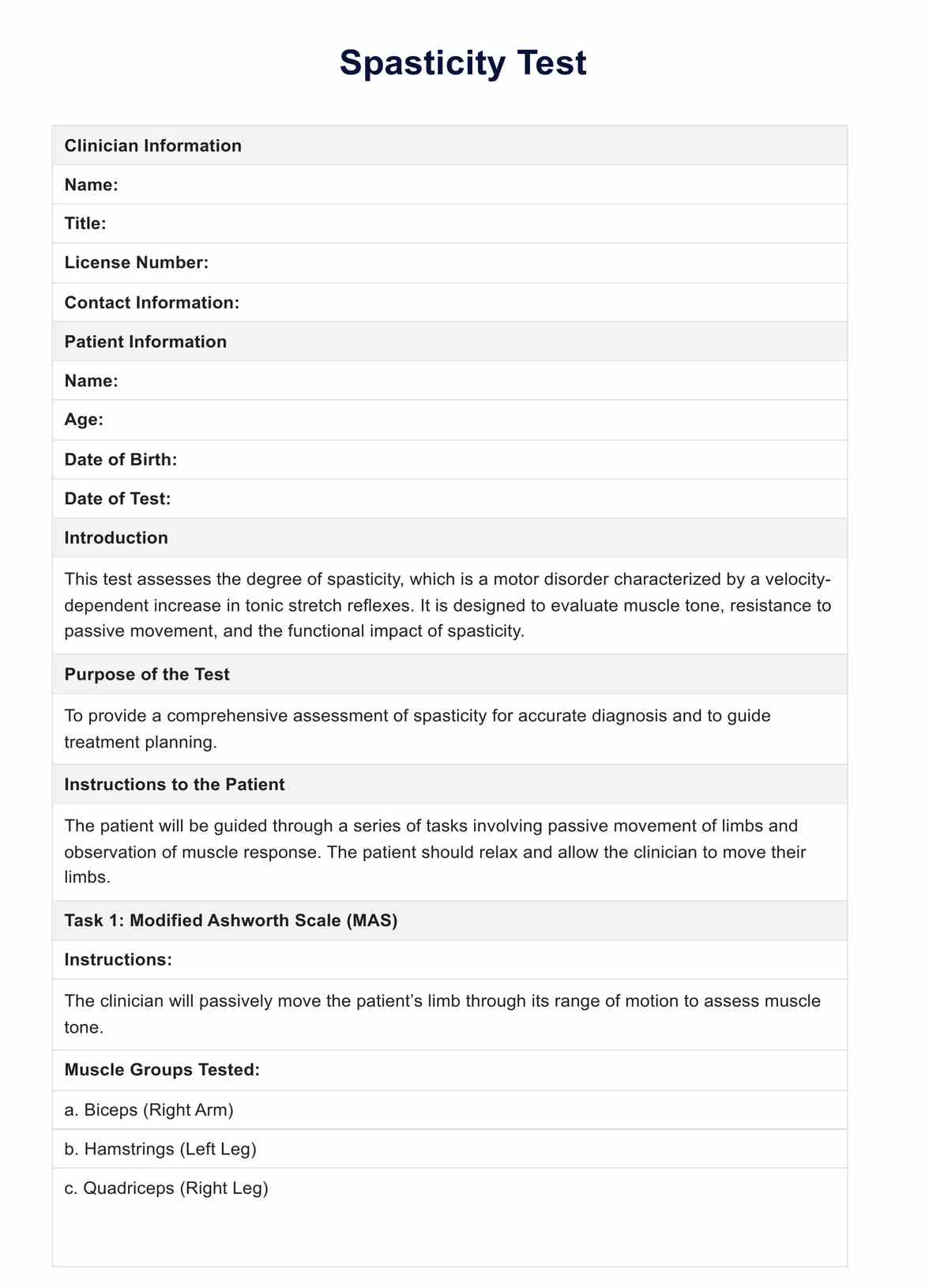The spasticity test is designed to assess the degree of muscle stiffness, resistance to passive stretching, and exaggerated reflexes in individuals with neurological disorders. It helps in determining the severity of spasticity and guiding treatment plans.

Spasticity Test
Download our free Spasticity Test example and learn how these tests aid in diagnosing and managing muscle spasticity effectively.
Spasticity Test Template
Commonly asked questions
Individuals with conditions like cerebral palsy, traumatic brain injury, multiple sclerosis, and spinal cord injury, which are known to cause spasticity, should undergo this test. It's essential for those experiencing increased muscle tone or difficulty with movement and gait.
The test typically involves clinical examination techniques such as the Modified Ashworth Scale or the Tardieu Scale, where a therapist assesses muscle tone and response to passive movement. It may also include observing reflexes and functional impacts of spasticity.
EHR and practice management software
Get started for free
*No credit card required
Free
$0/usd
Unlimited clients
Telehealth
1GB of storage
Client portal text
Automated billing and online payments











